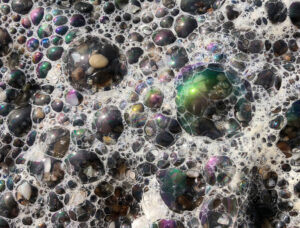Tomorrow morning, as you get ready for work, maybe read the news and have a cup of coffee, the world’s best big-wave surfers will be preparing to compete in this year’s Mavericks big-wave surf competition.
After a forecast of swells upwards of 40 feet, Mavericks Director Jeff Clark gave the go-ahead for the contest to begin Friday, January 24 at 8 a.m..
Twenty-four of the world’s best big-wave surfers have been invited to negotiate the westerly swells that produce the most powerful, compressed waves at the surf break.
Earlier this week event organizers were concerned because of a forecast of southerly winds, which would turn the giant waves into a giant washing machine, endangering both competitors and boats on the water.
“We’re looking at (favorable) light offshore winds now, along with the big swell we know is coming,” Clark told the San Francisco Chronicle. “This is the best we could hope for.”
Given the forecast, the National Weather Service has issued a high surf advisory for all Bay Area coastlines from Sonoma County to Monterey County. Only among a select few is that advisory a cause for celebration.
But what does it take to create a monster wave?
Here’s a quick explanation from a 2009 Bay Nature story by Kris Vann:
It all starts in what’s known as the “wave factory” in the Gulf of Alaska, where storms gather thousands of miles away. This area experiences heavy storm activity from October to February when low pressure from the south clashes with high pressure in the north.
These faraway storms create three key ingredients that make winter our big wave season: wind velocity (how fast it’s blowing), “fetch” (how much surface water area that the wind is blowing over), and duration (how long the wind is blowing over that area). The recipe for big waves is a high dose of all three.
Tides and water depth also affect waves. When the tide is high, the water is deeper. When the tide is low, the water is shallower. As the tide moves from high to low, the wave energy goes to the sea floor, slowing down the wave but concentrating the energy upward, intensifying the wave height.
The final ingredient is underwater topography. Without mountainous regions that rise steeply from the ocean floor, waves can’t become monsters. But as waves cross what surfers call a “launching pad,” the part of the wave that hits first will slow down, then bend into “V” formation, focusing the wave energy into one intense spot. This is called refraction. At this point, the energy explodes and wave height can more than double in an instant. The explosion is so intense at Mavericks that it registers on a seismograph.
You can’t catch the competition in person — after several spectators were injured in 2010, local authorities decided to close the roads leading to Pillar Point and the beach itself to the public. But you can watch the live feed at the Oceano Hotel & Spa at Harbor Village in Half Moon Bay, as part of the Mavericks Viewing Festival (tickets start at $15), or online at the Mavericks website.



-300x221.jpg)